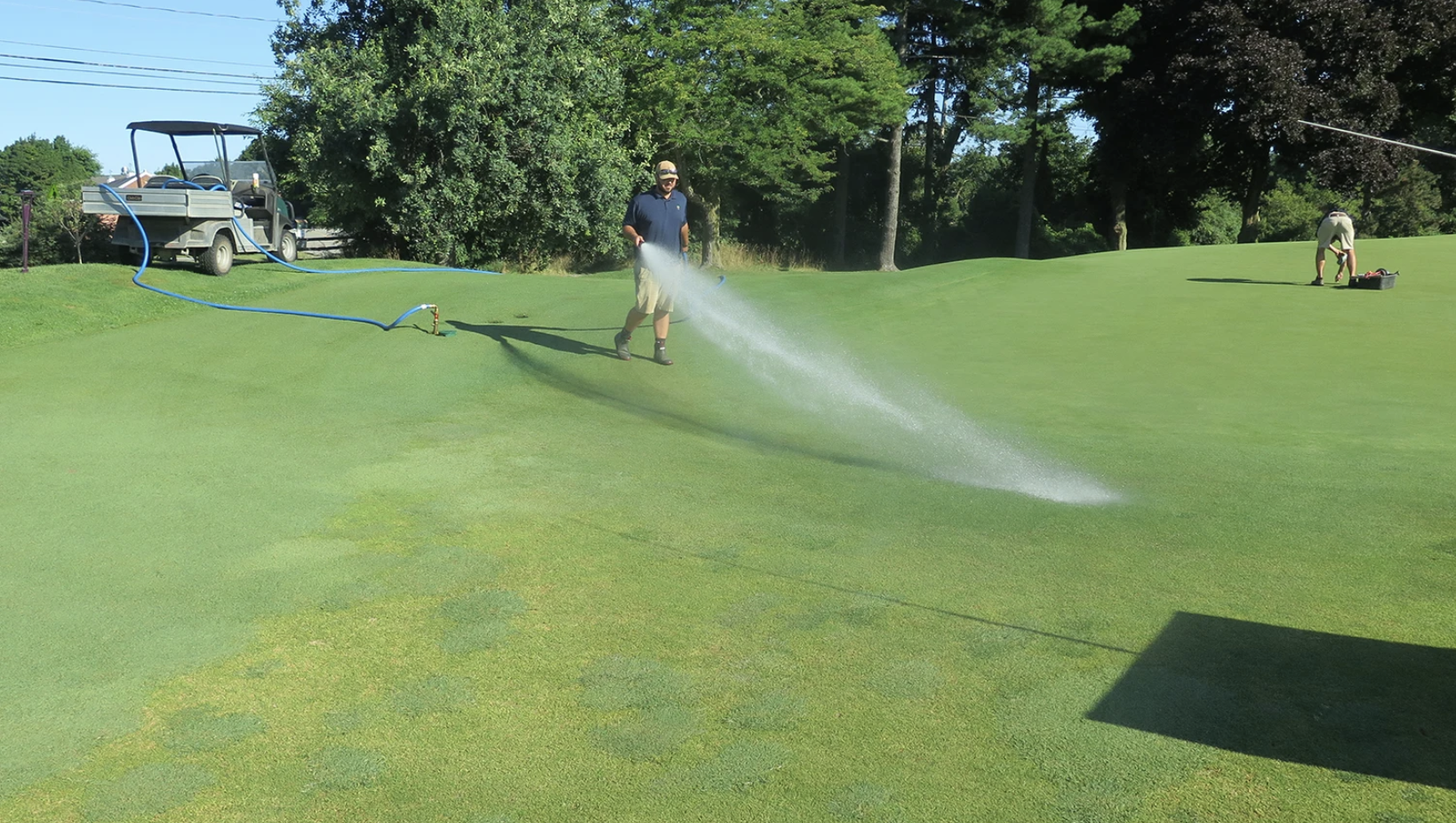USGA – Northeast Update – Summer Stress
The month of July was consistently hot throughout the Northeast. Some areas of the region set records for the most days above 90 degrees during July. The persistent heat even pushed its way up into northern New York and New England, providing ideal conditions for diseases such as anthracnose, brown patch and Pythium blight.
All these diseases can typically be managed with a sound fungicide program, but during periods of high disease pressure, it is common to see breakthrough if turf is under other abiotic stresses. Factors such as growing environments, thatch content, traffic from golfers and maintenance equipment, drainage, height of cut and fertility all influence turf susceptibility to these diseases. It is rare that a golf course won’t have an issue with one of these issues on at least one hole. For that reason, many courses have been forced to apply fungicides at high rates and on short intervals to fend off damage from diseases. This can help in the short term, but can be costly.
Stressful weather like we experienced in July highlight weaknesses throughout golf courses. Use this as an opportunity to identify areas that need to be addressed later in the season and to reevaluate maintenance practices. For example, if thatch content is excessive or growing environments are poor in the areas where turf struggled, use this season as a selling point to course officials, golfers or members as to why changes need to be made in the future.
It has been interesting to see how well creeping bentgrass has performed this season in comparison to Poa annua. Both species can provide great playing surfaces, but many prefer bentgrass because it is better able to withstand extreme environmental conditions. Many courses growing a mixed stand of bent and Poa have seen significant gains in bentgrass populations this year due to hot and dry conditions. If you are growing a mixed stand and notice that the Poa annua is not performing well, it might be time to shift maintenance practices to promote bentgrass populations gradually over time.
If you would like to discuss options for managing diseases during periods of extreme heat or for promoting bentgrass, please contact your regional USGA agronomist.
This article was written originally with USGA by Paul Jacobs here.
Northeast Region Agronomists:
Adam Moeller, director, Green Section Education – amoeller@usga.org
Darin Bevard, director, Championship Agronomy – dbevard@usga.org
Elliott Dowling, agronomist – edowling@usga.org
Paul Jacobs, agronomist – pjacobs@usga.org
